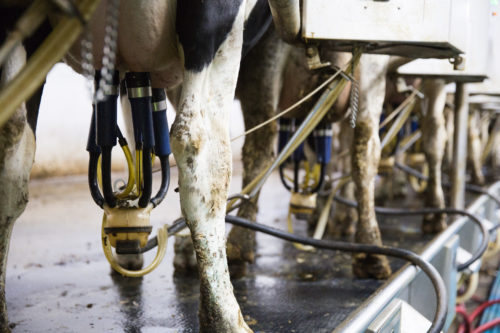What are 10 cows worth to your operation?
Posted: February 17, 2023 | Written By: Tim Kinches, Form-A-Feed

Dairy profit margins have tightened in the last 6 months. Dairy farms need to maximize income and squeeze every penny of efficiency they can find. The first tool a dairy manager or owner uses is often cutting cost. They quickly focus on cutting total feed cost, purchased feed, labor, putting off buying supplies or waiting on new equipment. These efforts can be successful in cutting operating cost and improving profitability. But I think most will agree this is a short-term fix with minimal long-term benefits. More likely it is a quick path to milk production loss, and overall productivity is reduced.
One profitable alternative has been to milk more cows. There is often room for a few more cows and the parlor can usually handle it. Total pounds of milk shipped each day goes up and we are making the farm and parlor as efficient as possible. On parallel with choosing to milk more cows, we have to manage the inevitable months that milking numbers dip. There are many reasons this naturally happens such as inconsistent flow of springing heifers, higher than expected cull rate, higher than normal dry cow numbers due to poor reproduction during summer heat stress, and then high pregnancy rates to catch up, just to name a few.
What does this predictable dip in milking numbers cost a dairy farm? What does having 10 less milk cows in your system cost?
- 10 cows milking 85 lbs of milk at $21/cwt is $179/day in revenue.
- 10 cows eating 57 lbs of dry matter at $.14/lb of DM costs you $80/day to feed them.
Does the absence of these 10 cows result in less overall work? Does it cut labor hours or allow for fewer people working in the barn? Do you have to wash the parlor less? Do you have to make 1 less batch of feed? The self-evident answer to these questions is “no.”
It does not matter if you are milking 200 cows or 2,000 cows, 10 cows is a big deal when looking at the bottom line to your income over feed cost. In this scenario, 10 fewer cows results in $99 per day, $693 per week, $3000 per month in potential lost revenue.
Consider the choice of buying springing heifers or fresh cows at $1800 per head. You will milk each one for an average of 305 days per year for 3 lactations (1035 days). Spreading the $1800 investment out over those 1035 days, it would cost you $1.74/day to purchase the animals. The feed cost for those 1035 days would average $7.38/day (915 days of lactating feed cost averaged with 120 days of dry cow feed cost). Combined, each cow would cost the farm $9.12 per day to purchase and feed for 3 years.
Now let’s consider the income potential of that same purchased cow. She will have 3 lactations, 305 days each, with an 85 lb average. Given an average mailbox price of $21/cwt, that amounts to $15.78/day in revenue for all 1035 days (again spreading the income across lactating and dry days). The farm could net a potential income over feed cost of $6,900 on just one cow! This is simplified to make the point and there are many variables to consider. However, there is also a clear financial opportunity that justifies buying cows to fill in gaps in inventory.
It is important to maintain “full” every day, week, and month, regardless of how you define “full.” Do not accept “Just the way things are right now.” Do not wait for the better days next quarter. Right now, actively make decisions that will help your farm persevere through times of financial challenge.